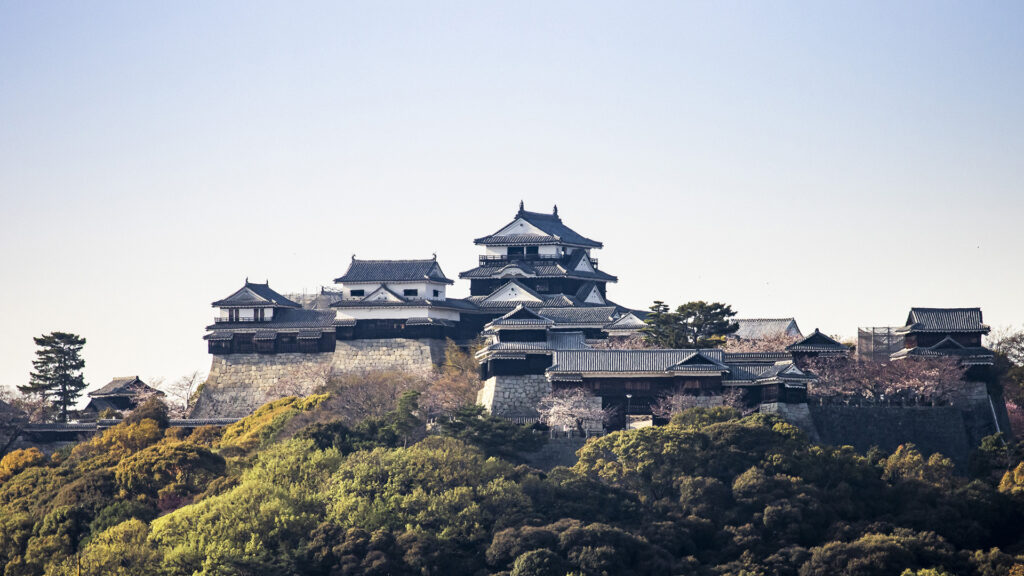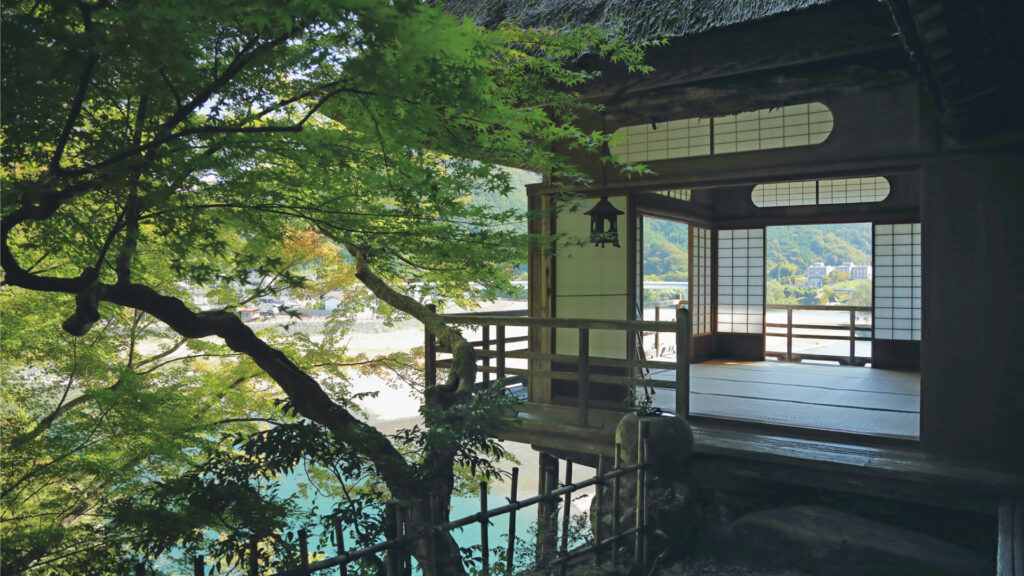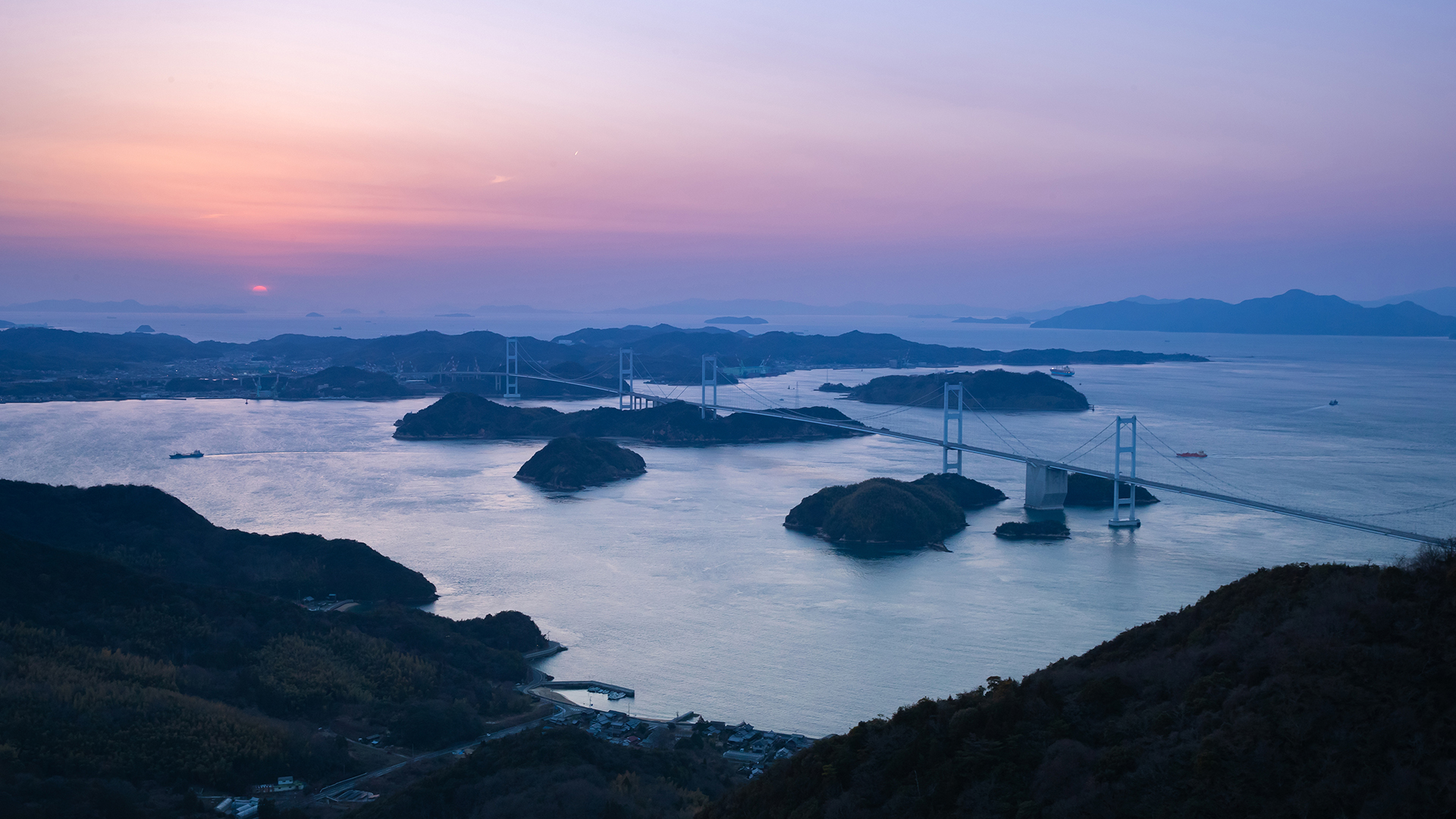Garyu Sanso
Whether you’re looking for outdoor adventure, to explore arts and history, or to just spend some time relaxing, Ehime is the perfect destination. There’s so much to offer in a place that’s quick and easy to get around. Here are a few highlights.
Within easy reach of Hiroshima, Ehime Prefecture in the northwest of Japan’s Shikoku Island is arguably one of the country’s most treasured cultural heartlands.
Although it’s not among Japan’s biggest prefectures, Ehime is home to a plethora of must-see attractions and historic sites, from its 3,000-year-old onsen and ‘original’ castle to one of the world’s most spectacular and unparalleled island-hopping cycle routes.
One of the 12 original castles of Japan (‘original’ castles are those built before the Edo period from 1603-1868 and maintained to the present day), Matsuyama Castle is perched on top of Mt. Katsuyama in the centre of Matsuyama City.
Accessible by four walking paths as well as a ropeway lift, the castle tower’s top floor rises 160 metres above sea level.
The views of the castle and its majestic stone walls interwoven with trees are well worth the trip. The castle tower is lit up until 11pm, so you can enjoy the views both day and night.
Ehime’s Ozu City is known for its old town, home to several well-preserved historic buildings, some of which have been converted into luxurious accommodation.
Among these, Garyu Sanso is serene retreat where traditional and modern architecture meet and impeccable garden design creates a soothing atmosphere.

Matsuyama Castle

Garyu Sanso
Designed to make the most of the scenic setting, the gardens were first created by Kanbei Watanabe in the late 17th century.
In 1907, the villa was built and named Garyu Sanso – meaning ‘reclining dragon mountain retreat’ – after nearby Mount Hōrai which resembles a sleeping dragon.
Another quintessential Ehime Prefecture experience is to bathe in Dogo Onsen – Japan’s oldest hot spring bath with a 3,000-year history that has featured a long line of royals over the centuries.
The main attraction is the Dogo Onsen Honkan, a wooden public bathhouse dating from 1894. The maze of stairways, passages and rooms flow with bathers and staff.
Nearby Dogo park houses the Yuzuki Castle ruins and the area also showcases Japanese art in various outdoor locations. Dogo Onsen is even said to have served as inspiration for Miyazaki’s popular animated film Spirited Away.
Ehime is home to eight temples of The Shikoku Henro or ‘88 Temple Pilgrimage’, one of which is the mysterious Ishiteji Temple.
A highlight of Ishiteji Temple is its statue-lined tunnel complex that leads to a second inner temple. If you are lucky, you might even see a pilgrim in their traditional costume paying their respects to Kobo Dashi (774-835), the founder of Shingon Buddhism in Japan.
You can get a one-day taste of the route by completing a guided tour from Daihoji Temple, the 44th temple, situated in a deep forest that sets off on a 10km trail that connects back with temple 45, the Iwayaji Temple.
With an elevation gain of about 540 metres, the hiking takes around three-and-a-half hours and offers both an active and a deeply immersive, rewarding experience.
Sparkling seas, white sand beaches and green islands await along the 70-kilometre Shimanami Kaido route that criss-crosses Ehime’s islands.
Cross several bridges and architectural marvels, and discover the fascinating museums, gardens and temples that dot the islands.
With separate dedicated lanes for walkers, cyclists and mopeds, Shimanami Kaido is a perfect way to explore the region over multiple days where you can eat at hidden culinary gems and rest at the array of inns and hotels.
Each island has different local delicacies to keep you going – Hakata salt ramen, okonomiyaki pancakes and local ice cream are a few of the local treats on offer.
Ehime’s largest city, Matsuyama has long been a place of poetry and since the Edo period it has been associated with haiku, the short poetic form with three phrases of five, seven and five syllables.
Haiku are part of the fabric of Matsuyama, literally. Many of its streets are lined with stones carved with haiku.
Hoyaken Haiku Bar is both a bar and a used bookstore, where books line the walls inside and you can have a drink while enjoying haiku.
You can also book in to learn how to write a haiku. The bar’s haiku-loving owners, husband and wife Tomoko and Satoshi Kadoya, take you through the steps and give you your own ‘haigou’, a pen used when writing haiku, as a souvenir.

Kurushima Bridges in Seto Inland Sea, Japan – Views over Seto Inland Sea
How to Get There:
Matsuyama Airport is connected with Japan’s major airports, as well as Seoul and Taipei.
Matsuyama is well connected by rail by taking a shinkansen from major cities such as Tokyo, Osaka, Kyoto and Nagoya to Okayama, before catching a limited express train from Okayama connecting with Ehime.
There is also a jet ferry from Hiroshima on the Seto Inland Sea to Ehime. Serious cyclists can take a bike along the Shimanami Kaido from Onomichi in Hiroshima Prefecture to Imabari City.
Competition Q4: Which of the following is not included in the prize?
- Kayaking
- Visit to traditional villages
- WIFI
- Flights



